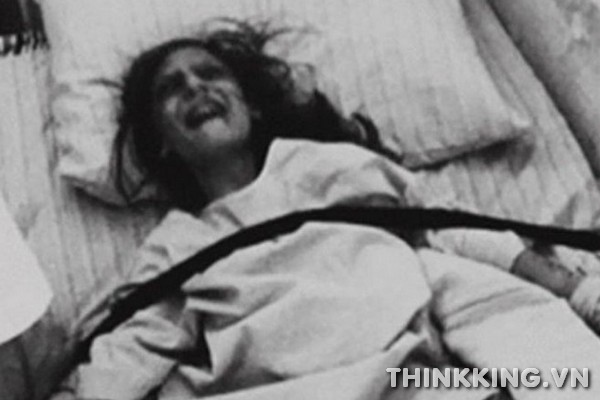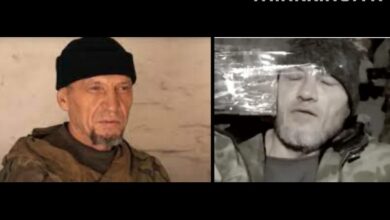The Terrifying Tale of Anneliese Michel: A Real-Life Exorcism
In the annals of chilling real-life stories, few resonate as deeply as that of Anneliese Michel, the tormented soul whose experiences inspired “The Exorcism of Emily Rose.” In 1970s Germany, Anneliese, a deeply religious young woman, found herself at the heart of a terrifying battle with what she believed to be demonic possession. Her affliction led to an extreme recourse: 67 exorcisms over ten grueling months.
As Anneliese’s behavior became increasingly erratic, characterized by harrowing screams and disturbing declarations, the line between profound religious belief and intense psychological distress blurred. Her plight raised contentious debates, pitting the sacred against the scientific, faith against reason.
Today, Anneliese’s story captivates and haunts in equal measure, presenting a complex enigma centered on the nature of belief, the treatment of mental illness, and the mysteries of the human psyche. Her legacy poses a profound question to the curious minds at Thinkking.vn and beyond: Where does one draw the line between the spiritual and the medical, and how does one navigate the murky waters when they converge?

Anneliese’s Early Life and Struggles
In the quaint Bavarian town of Klingenberg, Anneliese Michel’s life began under the stern watch of devout Catholicism. Born into a family where religion was not just faith but a way of life, she was destined for a path paved with rigorous spiritual discipline. Her father had once aspired to the priesthood and her aunts had taken the nun’s veil, setting the stage for an upbringing steeped in religious observance and penance.
Early Signs of Turmoil
Anneliese’s childhood was marked by an invisible burden, a “cloak of shame” stemming from her mother’s youthful indiscretion—a child born out of wedlock. This shadow of dishonor was a silent specter at the family’s table, one that demanded atonement. Anneliese’s mother, having borne the weight of societal judgment, instilled in her daughters the necessity of redemption, often through extreme means. This included wearing black on her wedding day, a stark symbol of her perceived sin.
The rigors of this spiritual austerity were compounded by Anneliese’s fragile health. As a child, she grappled with a host of illnesses—measles, mumps, and scarlet fever—that left her physically weakened and often isolated. It was during these early years that the first ominous signs of her struggles began to surface. The seemingly innocuous fainting spells at school were the harbingers of a deeper turmoil brewing within her.
A Cloak of Shame and Religious Austerity
The Michel household was a microcosm of piety and sacrifice. Anneliese and her sisters were ensconced in a world where playtime with peers was scarce, and prayer was abundant. Their home was an enclave that prioritized atonement over adolescence, where the echoes of prayers filled the rooms more than laughter. Anneliese’s mother’s past transgressions cast a long shadow, and the young girl’s life became a testament to a relentless pursuit of spiritual purity.
The Shadow of Illness
By the age of 16, Anneliese’s health had become a crucible of affliction. The seizures that wracked her body were as mysterious as they were terrifying. Doctors were stymied, unable to fully comprehend the scope of her symptoms, which now included convulsions and a strange compulsion to consume inedible substances. The physical ailments soon dovetailed with psychological torment. Diagnoses ranged from epilepsy to schizophrenia, but none could fully capture the essence of the darkness that seemed to envelop her.
As Anneliese transitioned into her teenage years, the veil between the seen and unseen appeared to thin; she reported visions and auditory hallucinations that left her petrified and her family desperate for answers. The medical community’s labels—Grand Mal Epilepsy and Psychosis—were clinical, yet they failed to account for the spiritual crisis that Anneliese and her family were convinced she was enduring. In the shadow of illness, both physical and spiritual, Anneliese Michel’s journey toward the infamous exorcisms began—a journey that would ultimately lead to a tragic juncture between faith and mortality.
The Descent Into Darkness

Anneliese Michel’s life, once filled with the normalcy of a small-town existence, began to unravel as she stepped into the abyss of the unknown. The descent into darkness was gradual, an insidious progression that started with bewildering blackouts and escalated to a terrifying battle for her very soul.
The Onset of the Blackouts
At the threshold of her sixteenth year, Anneliese experienced her first blackout. These episodes were not just lapses in consciousness but were accompanied by strange, trance-like states where she would find herself wandering aimlessly, disconnected from reality. The bed-wetting incidents that occurred during these episodes added a layer of distress and embarrassment, further alienating her from her peers.
Her family watched in horror as these spiritual seizures escalated, their frequency and intensity becoming more alarming with each passing day. The blackouts were the early omens of a much deeper malaise, one that medicine seemed ill-equipped to explain or treat. It was as if Anneliese was slipping away into a chasm that lay beyond the reach of conventional understanding.
From Medical Diagnosis to Spiritual Warfare
The journey from doctor to doctor yielded a diagnosis of temporal lobe epilepsy, a condition that could explain the seizures but not the auditory and visual hallucinations that haunted her. Anneliese reported hearing demonic voices damning her to hell, and seeing devilish faces in her day-to-day life. The prescribed anticonvulsants and antipsychotic medications did little to alleviate her symptoms, leaving her trapped in a state of limbo between the perceived spiritual affliction and the psychiatric labels placed upon her.
Her devout faith, once a source of comfort, became a battleground as she began to perceive herself as damned. Religious icons and places of worship, previously her sanctuaries, now seemed to repulse her very being. The Michel family, steeped in their faith, began to view Anneliese’s affliction not as a medical condition but as a manifestation of a sinister, otherworldly presence.
The Cry for an Exorcism
The escalation of Anneliese’s symptoms culminated in a plea for an exorcism. Her aversion to the sacred, the convulsions, and the voices led her and her family to the conviction that she was possessed. Initially, the church was hesitant; exorcism was a rite shrouded in controversy and reserved for the rarest of cases. However, Anneliese’s condition, viewed through the lens of their devout Catholicism, left little doubt in the minds of her family and eventually the clergy.
After two previously denied requests, the gravity of Anneliese’s deterioration finally moved the Church to act. The bishop granted permission, and thus began the series of exorcisms that would mark the final chapter of Anneliese Michel’s tragic descent. The battle that ensued was not merely against the seizures and the psychosis but against what they believed to be an invasion of her soul by demonic forces—a battle that would end with heartbreaking consequences.
The Exorcism Rituals

The Exorcism Rituals
Anneliese Michel’s story took its darkest turn with the commencement of the exorcism rituals. These rites were not mere prayers but intense spiritual confrontations, believed to be the last refuge for a soul besieged by demonic forces.
The Battle for Anneliese’s Soul
The exorcism sessions were led by Father Arnold Renz and Pastor Ernst Alt, who were convinced that Anneliese’s suffering was the work of the devil. The ancient Roman Ritual of Exorcism, a tome of prayers and commands, was their weapon in what they perceived as a war against an unseen enemy. Over the course of ten months, from 1975 to 1976, Anneliese endured 67 exorcism sessions, each lasting up to four hours.
The rituals were grueling, and the toll they took on Anneliese was evident. She was often restrained to prevent self-injury during convulsions, and her screams and pleas echoed through the confines of her home. Witnesses described a dramatic change in her demeanor during these sessions; her voice would contort into growls, she uttered phrases in languages she was not known to have studied, and displayed a ferocious countenance that was unsettling to all present.
The Struggle Intensifies
As the exorcisms progressed, Anneliese’s physical condition deteriorated. She became emaciated, refused to eat, and spoke of visions of demons tormenting her. Her knees ruptured due to the continuous genuflections performed during the rituals. Her frail body and the psychological toll of the exorcisms only heightened the family’s and exorcists’ conviction that they were witnessing a true possession and that only spiritual intervention could save her.
Despite the exorcists’ dedication to freeing Anneliese from what they believed to be the grip of evil, her health continued to spiral. The rites seemed to provide no respite, and Anneliese’s faith, though unwavering, was not enough to lift the darkness that had descended upon her.
The Final Rites
The final exorcism was carried out in late June 1976. Anneliese, weakened to the point of near-total collapse, continued to participate in the rituals that had dominated her life for the past year. She was convinced that her suffering was a form of atonement, not just for her own soul but for the sins of the wayward youth and the apostate priests of the modern Church.
On the morning of July 1, 1976, Anneliese Michel’s battle ended. She succumbed to the exhaustion, malnutrition, and dehydration that had ravaged her body over the months of exorcism. The battle for her soul, waged through the rites of exorcism, concluded not with the triumph of a liberated spirit, but with the tragedy of a life lost. The aftermath of this spiritual warfare would leave a lasting imprint, sparking a debate that intertwined faith, the law, and the bounds of religious practice.
The Aftermath

The death of Anneliese Michel sent shockwaves far beyond the small German town where she lived. It raised profound questions about the intersection of religion, law, and mental health, and left a legacy that continues to provoke debate to this day.
Legal Battles and the Question of Negligence
The aftermath of Anneliese’s death saw the state’s intervention in what had been a deeply private religious matter. The German authorities prosecuted Anneliese’s parents and the two exorcists, Father Renz and Pastor Alt, on charges of negligent homicide. The trial that ensued was not just an examination of the events leading up to Anneliese’s death but a broader inquiry into the responsibilities of individuals and institutions when dealing with cases of severe mental illness.
The court heard from a host of medical experts who testified that Anneliese’s death could have been prevented if she had received proper medical care. The defense, however, argued that the exorcism was conducted in accordance with her constitutional right to religious freedom. Ultimately, the defendants were found guilty of manslaughter resulting from negligence and were sentenced to six months in jail, which was later suspended, and three years of probation.
The verdict was polarizing. It was seen by some as a condemnation of religious fanaticism and by others as a failure to understand the complexities of faith. The legal battle also prompted a discussion within the Catholic Church about the criteria for and handling of exorcism cases.
Theological and Psychological Perspectives
The case brought to the fore the tension between theological interpretations of spiritual distress and psychological understandings of mental illness. Theological experts dissected the rites performed and scrutinized the discernment process that led to the exorcism’s approval. Some within the Church argued that the case highlighted the need for a more rigorous and nuanced approach to exorcism, one that involves psychiatric evaluation.
Psychologists and psychiatrists used the tragedy to emphasize the importance of treating mental illness medically. Anneliese’s symptoms, many argued, were consistent with psychiatric conditions that, while perhaps influenced by her religious upbringing, were treatable through medical intervention.
The Legacy of Anneliese Michel
Anneliese Michel’s ordeal became a cultural touchstone, inspiring books, documentaries, and films like “The Exorcism of Emily Rose,” which portrayed a fictionalized account of her story. Her grave in Klingenberg am Main has become a pilgrimage site for those who see Anneliese as a victim of demonic possession, a martyr, or a cautionary tale of misdiagnosis and misunderstanding.
The debates that her case ignited about faith, mental health, and the legal responsibilities of caregivers remain unresolved. Anneliese’s story challenges us to consider the delicate balance between respecting religious practices and ensuring the well-being of the vulnerable. It stands as a stark reminder of the tragic consequences that can arise when the signals of mental distress are interpreted through a strictly spiritual lens, and the potential dangers when faith and medical care are at odds.
FAQs
1: What was Anneliese Michel diagnosed with by medical professionals? A1: Anneliese Michel was diagnosed with Grand Mal Epilepsy and Psychosis, conditions that contributed to her harrowing experiences and the subsequent exorcism attempts.
2: How many exorcisms did Anneliese Michel undergo? A2: Anneliese Michel underwent 67 exorcisms over the course of her ordeal.
3: What film was inspired by Anneliese Michel’s story? A3: The 2005 film “The Exorcism of Emily Rose” drew direct inspiration from the tragic events of Anneliese Michel’s life.
4: What was the outcome of the legal case against Anneliese’s parents and the priests? A4: Anneliese’s parents and the priests involved were convicted of negligent homicide and sentenced to six months in jail and three years of probation.
5: How has Anneliese Michel’s story impacted the discourse on exorcisms and mental health? A5: The story of Anneliese Michel has sparked debates on the role of exorcisms in modern society, the intersection of religion and mental health treatment, and the responsibilities of those in positions of spiritual authority. It serves as a cautionary tale about the potential dangers of overlooking medical explanations for psychological disorders.










